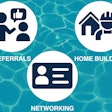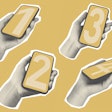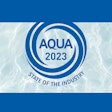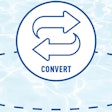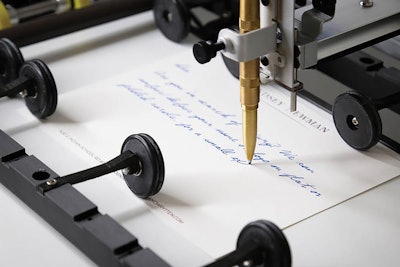
 David Wachs | CEO | Handwrytten
David Wachs | CEO | Handwrytten
In an age saturated by emails, texts and automated responses, some pool and spa professionals are turning to a surprisingly low-tech strategy to make a lasting impression: the handwritten note.
“Everything has gone digital, and a lot of it is lost in the noise,” says David Wachs, CEO of Handwrytten, a company that helps businesses send handwritten notes using robotic writing technology. “Consumers are overwhelmed — emails are deleted without a second thought, and even personalized texts might feel artificial, especially with the rise of AI.”
While email and text remain important communication tools, handwritten notes offer a more personal and memorable way to connect with clients. A brief thank-you or seasonal check-in can stand out in a mailbox — and even get saved. “There’s an emotional connection,” says Wachs. “People open it, read it, and often keep it.”
HOW IT WORKS
There are a number of ways to incorporate handwritten notes into a customer outreach strategy. Some companies handwrite notes themselves. Others use services like Handwrytten to simplify the process at scale — businesses can create an account, design custom cards featuring their branding or project images, and choose from over 35 handwriting styles or upload their own.
Wachs explains: “Messages can be typed, personalized, and scheduled for mailing, while the platform’s technology handles the rest: printing the card, robotically writing the message in real ink, handwriting the envelope, and mailing it with a real stamp. There’s also a prospecting feature that allows users to draw a radius on a map and target specific ZIP codes, income levels or household sizes.”
This kind of outreach isn’t necessarily cheap — especially at scale — but for high-value services like pool construction or long-term maintenance, some companies see it as a worthwhile investment.
For example, according to Wachs, one private-equity-backed pool company in the Southeastern U.S. uses handwritten notes both for thanking current customers and prospecting new ones. Their campaign saw a reported 17% return on investment within 60 days of launch. “They continue to use us,” he says, “and have seen success using thank-you notes and referral requests.”
TIPS FOR GETTING STARTED
For pool professionals looking to try it out, Wachs recommends starting small: “Write 10 real notes to prospective or current customers and see what kind of feedback you get. If it works — and it usually does — then consider using a service to scale.”
He also cautions against sending long messages. “Aim for around 400 characters — just enough to feel personal without seeming too polished or scripted,” he says. “Something simple like, ‘Hey, we’re working in your neighborhood and would love to chat about a pool for this summer.’”
Another tip? Be wary of using laser- printed fonts to simulate handwriting. “People can tell,” Wachs says. “Authenticity is key.”
WHEN TO REACH OUT
Handwritten notes don’t need to be frequent to be effective. Wachs suggests sending two to three per year per customer — perhaps for holidays, birthdays, or the start of pool season. Some companies start as early as January to build interest for summer.
Ultimately, handwritten notes are just one tool in a broader marketing strategy. But for pool and spa companies looking to cut through the digital clutter and foster stronger customer relationships, they may be worth exploring.
“It’s about finding meaningful ways to stay top of mind,” says Wachs. “Sometimes the old-school approach works best.”
This article first appeared in the August 2025 issue of AQUA Magazine — the top resource for retailers, builders and service pros in the pool and spa industry. Subscriptions to the print magazine are free to all industry professionals. Click here to subscribe.































